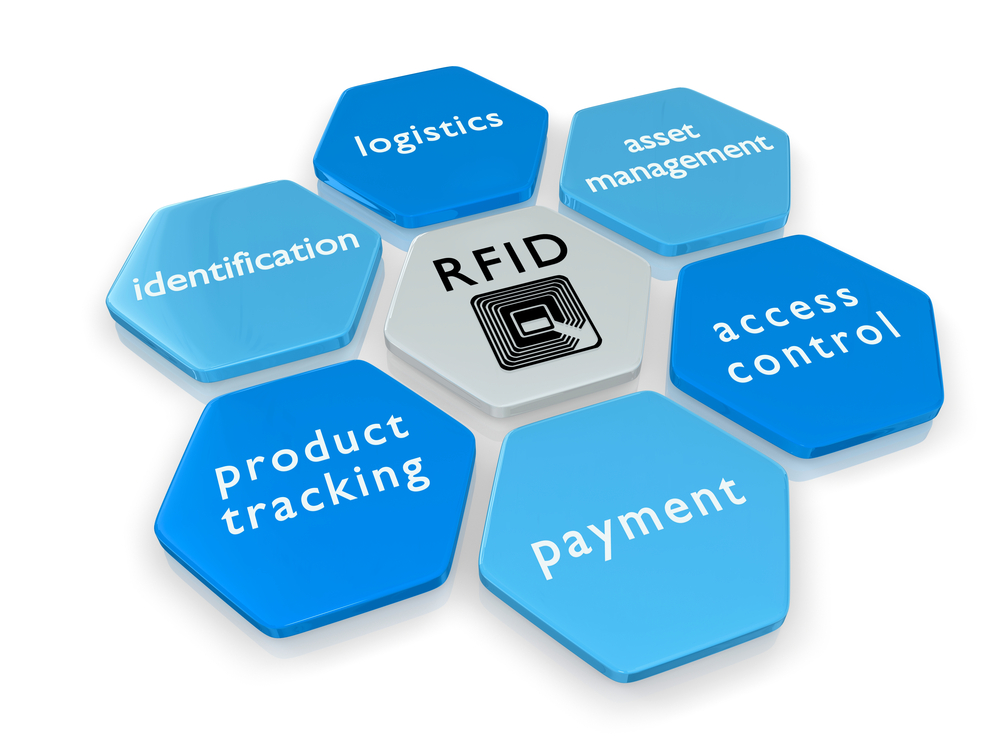RFID 八股
RFID八股
省流
省不了一点
自动识别技术
- RFID
RFID (Radio Frequency Identification) is a technology that uses radio frequency waves to transfer energy and data between a reader and a movable item to identify, categorize, track, …
- 自动识别技术种类
Optical(OCR); Biometic(fingerprint\voice); RFID; Smart card; Barcode
- speech 识别步骤
Feature Extraction, Statistical acoustics model, Pronunciation dictionary, Language model, Decode
- speech识别技术特征
Easy use Easy accept by user, cheap equipment, not involve privacy, lack of international standard difficult in promoting
- face 识别步骤
Face acquisition, Face positioning, Local feature analysis, Lookup Identity, Identity comfirmation
- face 识别技术特征
Surroundings, hair ornaments, age can affect the recognition rate, Fast recognition speed, not easy to be aware of it
- 1D 2D barcode 比较
1d:Limited storage capacity, need to combine with the database.
The barcode size is relatively large, the space utilization is low.
Fault tolerance is poor, cannot restore the information after the corruption.
2d:Large storage capacity. Up to 32KB.
High information density. Can store text, sound, pictures and other information.
Powerful error correction capability. 2D code can still be identified in the case of 50% defacement.
Support for encryption. Multiple security features.
- barcode RFID比较
§ efficiency: you can scan multiple items at once(同时读取多个tag)
§ durability: tags can handle exposure to weather conditions like sun and rain
§ security: you can encrypt RFID tags so only your reader can get the data
- rfid特征
Non-contact automatic and rapid identification
Permanently store a certain amount of data
Simple logical processing
Reflection signal strength is affected by the distance and other factors significantly
Low cost, can be deployed at a large scale
- rfid简史
RFID wasn’t officially patented until 1973, in a landmark claim by Mario W. Cardullo, who created an active RFID tagging system that utilized rewritable memory. RFID started as early as World War II, where airplanes used to be identified as “friend or foe” using this technology.
In 2003, EPCGlobal systems came to being and they started standardizing RFID from all possible directions.
- rfid限制
- Limited tag resources
- computing storage bandwidth
- reader trans power
- Performance affect by env factors
- Energy absorption pathloss multi-path
- tag distribution
- singnal interference
- 典型工作频率
LF 125,135k
HF 13.56M
UHF 860-960M
microwave 2.4G 5.8G
RFID架构
- 架构组成
tag antenna reader middleware software(backend) database
- reader功能
power supply(tag)
communication(tag mid/ware)
security
- tag功能
data storage
energy harvest
contactless RW
- 中间件功能
One of the primary benefits of using RFID middleware is that it standardizes ways of dealing with the flood of information these tiny tags produce. (1 mark)
Three primary motivations for using RFID middleware:
- Providing connectivity with readers (via the reader adapter),
- Processing raw RFID observations for consumption by applications (via the event manager),
- Providing an application-level interface to manage readers and capture filtered RFID events.
- reader构成
Signal Processing&Control; RF
- tag构成
simulated frontend; control; storage
- 天线类型
dipole, fold dipole, printed dipole, double dipole
标准
- 列举三种标准
Ans:
- Item management: Air Interface
- Technical Standard: Contactless Smart card
- Application Standard: Animal identification; Container identification
EPC
- Why is standardization very important in the RFID world? What are the most important standardization organizations in this arena?
Ans:
What is standard?
- Mandatory or discretionary rules, requirements, or conditions
- Performance, design, operation, or measurements of quality
Why do we need standards?- Better interoperability
- Lower costs
- EPCglobal Network:
a. When did EPC started? What was its goal?
b. State at least three universities that participate in the EPCglobal partnership.
c. When and who founded EPCglobal Network? What was its mission?
d. Draw a diagram of a typical EPCglobal network and explain its five basic services.
Ans:
a. 1999
- create a cost-efficient, global and open-source system
- Develop less complex original standards for the communication between transponder and reader
- Can be implemented more cost-efficiently than existing RFID standards
b. Fudan MIT Cambridge
c. 2003 EAN&UCC
- Develop and oversee the standards of electronic product codes (EPC) by using the RFID technology
- Provide registry service of the codes
- Coordinate with ISO for their review and ratification
d. Five basic service:
- EPC code
- Identify System(Reader Tag)
- EPCGlobal Middleware
- EPCIS
- EPCDS(ONS)
- Electronic Product Code (EPC) enables the unique identification of objects. EPC combines of three unique numbers: domain manager number, object class number and serial number. Additionally, we have the version number which indicates the number of bits contained in each of the remaining three partitions. EPC-96 type 1 is composed of
a. For an EPC-96 type I: 01 0000A89 00016F 000169DC0, identify each domain in this EPC-96 type I?
b. Match the number of bits for EPC-96 Type I with the example.
Ans:
a. Version number; Domain manager; Object class; Serial Number
b. 01 0000A89 00016F 000169DC0
- EPC Class 0 standard:
a. For which types of tags stands EPCglobal class 0 protocol?
b. How many bits are included in EPC code?
c. Which anti-collision protocol is used in this standard?
Ans:
a. Passive read-only
b. 64bit or 96bit
c. binary tree based variant algorithm
- EPC Class 1 Generation 1 (EPC C1G1) Standard:
a. For which types of tags stands EPCglobal C1G1 protocol?
b. How many bits are included in EPC code?
c. Does it support the LOCK and Kill commands?
d. Is it a half-duplex or full duplex protocol?
e. Are EPC C1G1 and EPCglobal class 0 compatible?
f. Which anti-collision protocol is used in the standard EPC C1G1?
g. Explain the PingID functionality.
Ans:
a. Passive read many write once
b. 64bit or 96bit
c. Support the LOCK and Kill commands
d. packet-based half-duplex protocol
e. Not-compatible
f. Binary tree like with PingID
g. A mask filter is provided that specifies the starting position of the traversal process and the access to the tag.
- EPC Class 1 Generation 2 (EPC C1G2) Standard:
a. For which types of tags stands EPCglobal C1G2 protocol?
b. At which frequency operates this standard?
c. Is it a half-duplex or full duplex protocol?
d. Which anti-collision protocol is used in the standard EPC C1G1?
e. Explain the physical layer communication interface.
f. Which modulation techniques are used in EPC C1G2?
g. What are the four commands in EPC C1G2?
h. the seven Tag states
Ans:
a. Passive read many write once
b. 860MHz-960MHz
c. Two independent communication link. half-duplex protocol
d. Dynamic frame slotted ALOHA(DFSA)
e.
- the same as the one in the seven-layermodel of the OSI protocol stack.
- There are two communication links in the EPC C1G2, reader-to-tag communication link and tag-to-reader communication link.
- The two links are independent and have different data encoding schemes, data rates and data modulation modes.
f. RTT link ASK, TTR link ASK/PSK
g. Query QueryRep QueryAdjust Select
h. Ready Arbitrary Reply Acknowledge Open Secure Killed
应用安全
- State three patterns of RFID applications.
tag identification, information retrieval and integrate, object detection and tracking.
- Applications for RFID tag identification.
Logistics; ITS(Intelligent Transport)
- Applications for RFID information retrieval and integrate.
Smart Poster; Electronic business card; Mobile Payment
- Applications for RFID object positioning and tracking.
baby security monitoring, medical applications, personnal real-time positioning system.
- State at least three security threats to RFID systems.
- Spying out: The attacker tries to get unauthorized access to information and data of the active and passive file.
- Deception: The attacker tries to feed incorrect information into the RFID system in order to deceive the active party, i.e. the RFID system operator, or the passive party, i.e. the user of the RFID system.
- Denial of service: This kind of attack affects the availability of functions of the RFID system.
- Protection of privacy: The attacker considers the RFID system to be a threat to her privacy and tries to protect herself with attacks on the RFID system.
- List security attacks on transponders
§ permanent destruction of the transponder
§ transponder shielding/tuning
§ spoofing and cloning of transponders
- List security attacks on rf interface
§ Eavesdropping: interception of the communication between reader and transponder;
§ Jamming: interruption of the communication between reader and transponder;
§ Extending the read range: to be able to skim a remote transponder, without being detected;
§ Denial of Service (DOS) attacks: blocking a reader;
§ Relay Attack: undetected use of a remote transponder.
- Health Risks from RFID
RFID devices may interact with medical devices such as pacemakers, which can cause dangerous situations and indirect health hazard.
RFID transmitters and short-range radio devices are regulated differently in Europe and USA.



